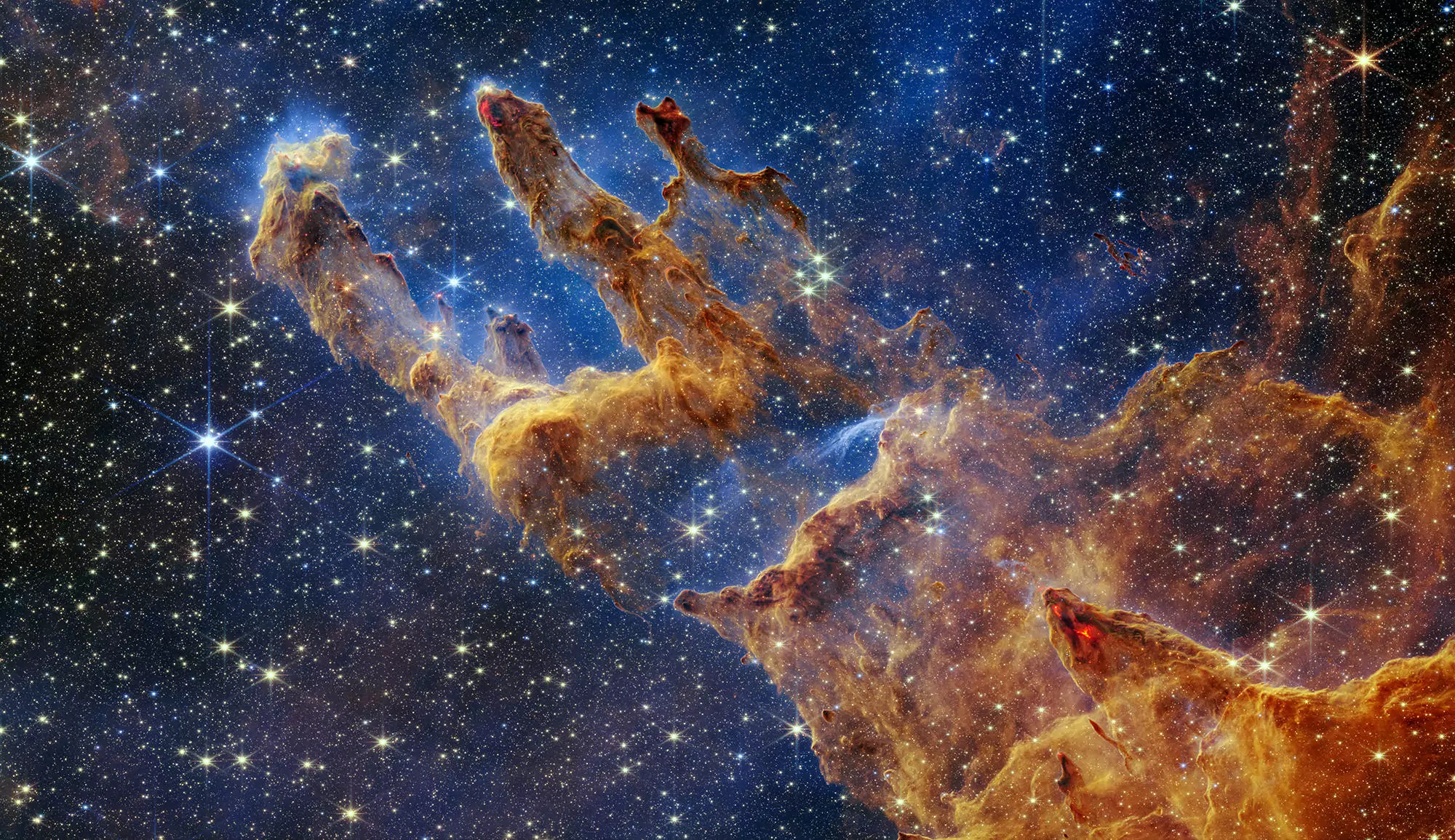
Imaging an exoplanet amounts to detecting the light emitted or reflected by a body in order to analyze its composition. This constitutes a real challenge, since it is very difficult to separate the signal from that of the star around which the body is gravitating, and which is far more intense. Coronagraphy is one of the techniques generally used to do this : it enables one to dim the light of the star without changing that of the exoplanet : however the luminous flux obtained is weak.
Since 2014, a number of instruments have been observinge the stars close to the Sun and have thereby managed to record the images of only about fifteen exoplanets. HR8799e is one of them.

Discovered in 2010, HR8799e is the innermost of the four exoplanets turning around the star HR8799, which is at a distance of 129 light years from the Sun. The four exoplanets making up the system are very massive, between 5 and 10 times the mass of Jupier. They are also all very young, about 30 million years old and still carry traces of their formation.
In order to observe HR8799e, astronomers used for the first time the technique of optical interferometry. This technique, which combines the light of the four 8metre telescopes making up ESO’s VLTI at Paranal, enables one to obtain a higher angular resolution, the objective being to observe increasingly finer detail. Having obtained directly in great detail the spectrum of the light emitted by HR8799e, the scientific team has validated the use of this technique to observe exoplanets.
Thanks to this interferometric technique, the astronomers managed to select accurately the light coming from the exoplanet : the electromagnetic wave coming from the exoplanet went simultaneously through the 4 telescopes and was recombined on a detector where the photons coming from the planet could be clearly distsinguished from the photons from the star. They were thus able to obtain an extremely pure planetary signal, and thereby find accurately chemical composition of the planet.
« The luminous flux of the star is several thousand times more intense than that of the exoplanet, the two objects being so close ! Its somewhat as if we were photographing a fly around a lamp, at a distance of 10 km from us. », notes Sylvestre Lacour, CNRS scientist at the Observatoire de Paris - PSL, leading author of the paper.

What did the astronomers see ?
The first result of their observations was that there was a significant concentration of carbon monoxide and a methane deficit. The scientists explain this chemical composition as a consequence of currents which mix the atmospheric layers. The winds are so intense that they hamper the chemical reaction which produces methane from carbon monoxide.
The second result is the presence of dust which reddens the light of the exoplanet. This is explained as a consequence of the condensation of silicate and iron particles in the upper atmospheric layers, and a temperature of over 1000 K maintained via a green-house effect. « The storms which must be up there ! », notes Sylvestre Lacour.
And there is more. Thanks to the interferometric technique, the position of the planet could be determined accurately : HR8799e is not in the same orbital plane as its brothers ; in fact, its orbital plane is inclined at 2° with respect to them. This need not surprise us : in our own solar system, the orbital plane of Jupiter is, for example, inclined at 1,3° with respect to that of the Earth. And this deepens our knowledge of the multiple exo-planetary system HR 8799.
These observations throw new light on the atmospheric activity of young planets. Far from being just uniform spheres of matter, exoplanets have atmospheres of considerable complexity. The scientific community can now rely on optical interferometry as a means to understand what is happening, and hence understand their formation. The research potential is enormous and exciting.


![<multi>[fr]drapeau anglais[en]english flag</multi>](IMG/jpg/en-6.jpg)